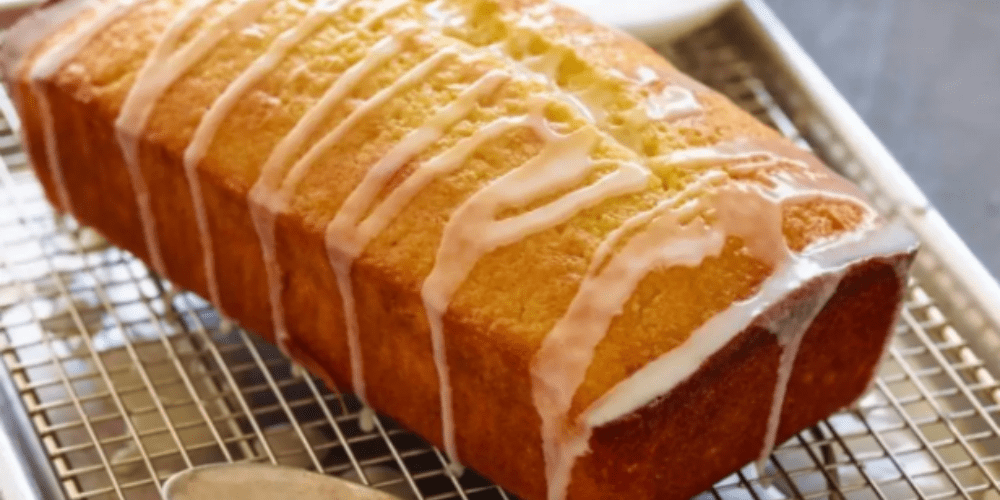Lemon Loaf Cake

Indulge your taste buds with the tantalizing flavors of this tangy and moist Lemon Loaf Cake! Perfect for any occasion, this delightful dessert is sure to impress with its refreshing citrus notes and tender crumb. Whether you’re hosting a brunch, afternoon tea, or simply craving a sweet treat, this Lemon Loaf is a must-try recipe that will leave you coming back for more.
Who is This Recipe For?
This Lemon Loaf cake is perfect for anyone who appreciates the bright and zesty flavor of lemon in their desserts. Whether you’re a seasoned baker looking for a new recipe to add to your repertoire or a novice in the kitchen eager to try your hand at baking, this recipe is simple enough for beginners yet yields impressive results that will delight your taste buds.
Why It’s Great
- Tangy Flavor: The combination of fresh lemon zest and juice gives this loaf its bright and tangy flavor profile, making it a refreshing and uplifting treat.
- Moist Texture: With the addition of sour cream, this loaf stays wonderfully moist and tender, ensuring every bite is bursting with flavor.
- Easy to Make: With simple ingredients and easy-to-follow instructions, this recipe is perfect for both beginner and experienced bakers alike.
- Versatile: Enjoy a slice of Lemon Loaf on its own or pair it with your favorite hot beverage for a cozy afternoon treat. It’s also a great addition to brunches and potlucks.
Kitchen Equipment Needed
To make this Lemon Loaf Cake, you’ll need the following kitchen equipment:
- Loaf pan (9″x4″ or about 22x11cm)
- Parchment paper
- Electric hand mixer
- Mixing bowls
- Whisk
- Spatula
Ingredients
- 125 grams (1/2 cup) butter, room temperature
- 3 large eggs, room temperature
- 1 cup castor sugar
- 1 tablespoon lemon zest
- 2 tablespoons fresh lemon juice
- 1 & 2/3 cups cake wheat flour
- 1/4 teaspoon bicarbonate of soda
- 1/2 cup sour cream, room temperature
Lemon Glaze:
- 1/2 cup icing sugar
- 1 tablespoon lemon juice
Instructions
- Preheat oven to 180 degrees Celsius. Grease a loaf pan with butter and line the bottom with parchment paper.
- Sift the flour and bicarbonate of soda together and set aside.
- Beat the butter and sour cream together in a large bowl using an electric hand mixer. Rub the lemon zest into the sugar, then add it to the butter mixture and beat until light in color.
- Mix in the eggs, one at a time, ensuring each is well incorporated.
- Mix in the lemon zest and juice.
- Add the flour mixture, half at a time, and mix until combined on a low speed.
- Pour the batter into the loaf pan, smoothing the top with a spatula. Bake for 45 minutes or until a toothpick inserted in the center comes out clean.
- Allow the cake to cool completely before turning it onto a cooling rack.
Lemon Glaze:
- Mix the icing sugar and lemon juice together using a whisk.
- Drizzle the glaze over the cooled cake.
Notes
- If you prefer a more generous glaze, you can double the amount of icing sugar and lemon juice.
- Granulated sugar can be substituted with castor sugar.
- Sour cream contributes to the fine crumb and delightful flavor of this loaf, so I wouldn’t recommend a substitute.
- While vanilla essence can be added for extra flavor, it’s not necessary in this recipe.
- The size of the loaf pan affects the rise of the cake; using a slightly larger pan may result in less rise due to batter spreading out more.
FAQ
Q: Can I freeze the Lemon Loaf Cake? A: Yes, you can freeze the loaf for up to 3 months. Wrap it tightly in plastic wrap and aluminum foil before freezing. Thaw in the refrigerator overnight before serving.
Q: Can I use lemon extract instead of fresh lemon juice? A: While fresh lemon juice provides the best flavor, you can use lemon extract as a substitute. Start with a small amount and adjust to taste.
Q: Can I omit the sour cream? A: Sour cream adds moisture and flavor to the loaf, but you can substitute it with Greek yogurt if needed.
Food Pairings
- Enjoy a slice of Lemon Loaf with a hot cup of tea or coffee for a cozy afternoon treat.
- Serve it alongside fresh berries and whipped cream for a delightful dessert.
- Pair it with a scoop of vanilla ice cream for a refreshing summer indulgence.
Share and Subscribe
If you enjoyed this Lemon Loaf cake, don’t forget to share it with your friends and family. For more delicious recipes, subscribe to our blog and be the first to know when new recipes are posted. Happy baking!

Lemon Loaf Cake
Equipment
- Loaf pan (9″x4″ or about 22x11cm)
- Parchment paper
- Electric hand mixer
- Mixing bowls
- Whisk
- Spatula
Ingredients
- 125 grams 1/2 cup butter, room temperature
- 3 large eggs room temperature
- 1 cup castor sugar
- 1 tablespoon lemon zest
- 2 tablespoons fresh lemon juice
- 1 & 2/3 cups cake wheat flour
- 1/4 teaspoon bicarbonate of soda
- 1/2 cup sour cream room temperature
Lemon Glaze:
- 1/2 cup icing sugar
- 1 tablespoon lemon juice
Instructions
- Preheat oven to 180 degrees Celsius. Grease a loaf pan with butter and line the bottom with parchment paper.
- Sift the flour and bicarbonate of soda together and set aside.
- Beat the butter and sour cream together in a large bowl using an electric hand mixer. Rub the lemon zest into the sugar, then add it to the butter mixture and beat until light in color.
- Mix in the eggs, one at a time, ensuring each is well incorporated.
- Mix in the lemon zest and juice.
- Add the flour mixture, half at a time, and mix until combined on a low speed.
- Pour the batter into the loaf pan, smoothing the top with a spatula. Bake for 45 minutes or until a toothpick inserted in the center comes out clean.
- Allow the cake to cool completely before turning it onto a cooling rack.
Lemon Glaze:
- Mix the icing sugar and lemon juice together using a whisk.
- Drizzle the glaze over the cooled cake.
Notes
Granulated sugar can be substituted with castor sugar.
Sour cream contributes to the fine crumb and delightful flavor of this loaf, so I wouldn’t recommend a substitute.
While vanilla essence can be added for extra flavor, it’s not necessary in this recipe.
The size of the loaf pan affects the rise of the cake; using a slightly larger pan may result in less rise due to batter spreading out more.
